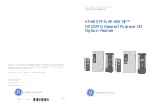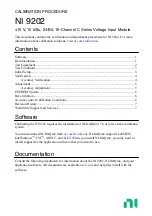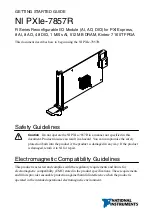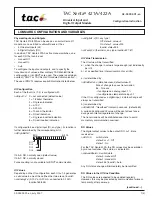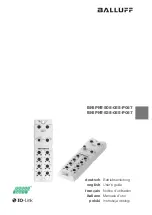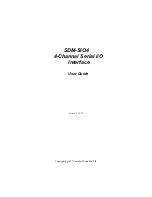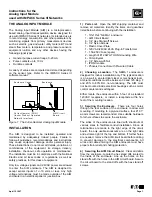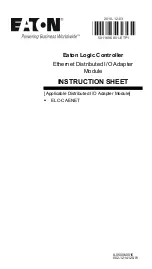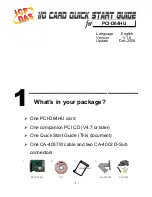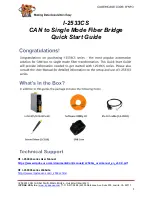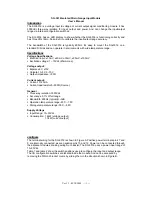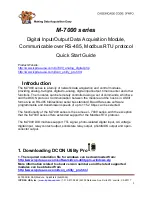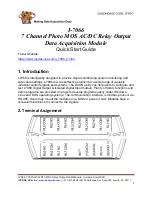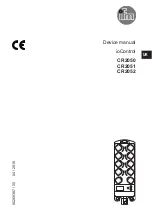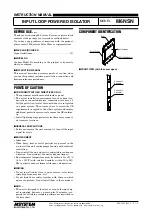
4 / 27
P/N 466-2488 • REV A • ISS 02JUL13
Overview Of Quik Bridge® Operation
The Quik Bridge® operates in conjunction with the NX
Receiver and a Control Panel.
8 transmitters are enrolled on the NX receiver that is linked via
the NX bus to Quik Bridge®. The signals sent from the
transmitters to the receiver are sent via the bus and mapped to
the outputs on the NX Quik Bridge®. The outputs on the Quik
Bridge® are programmed with the events to be sent to the
inputs on the control panel. The 8 outputs on the bus are wired
to the 8 inputs on the control panel. (See Figure 2).
Outputs
The Quik Bridge® Output Module uses open-collector
transistors via the NX Receiver for the zone and trouble
outputs (see Figure 3). The outputs can be open (high
impedance) or closed (shorted to ground), which can be
configured to be normally closed (N/C) or normally open (N/
O), via programming locations. Each output can be wired to the
control panel.
LED Indicators
The receiver has 11 LEDs: 8 zone LEDs (bottom row), a Power
LED, a Low Battery LED, and a Supervisory LED (see Figure
4).
Power LED indications
Table 1 describes the power LED states. The power LED turns
on after power is applied to the output module and the self-
tests are passed. If the output module fails the self-tests, the
power LED does not turn on.
Table 1: Power LED States
Power LED
Indicates
On steady
Output module has power and is functioning
normally.
Off (and all other
LEDs off)
Output module is not properly wired or has a
power failure.
LED Indications for trouble situations
The LEDs indicate 4 conditions: alarm, low battery, supervisory
failure and tamper-trouble condition. In normal operation it only
shows Condition 1. As soon as there is an off-normal situation,
the LED’s displays in sequence Condition 1, Condition 2,
Condition 3 and Condition 4 with a delay of 2 seconds
between each condition. This gives all the necessary
information.
Condition 1: To diagnose alarm status
When the trouble LEDs are both off, the zone LEDs indicate
alarm information.
The zone LEDs turn on for zones that are open (in alarm).
Zone LEDs remain off for zones that are closed or not used.
Condition 2: To diagnose transmitter supervisory
(868.6 MHz)
The supervisory LED indicates when 1 or more transmitters
have failed to report to the receiver for at least 150 minutes.
(Long Supervision Window). The value of 150 minutes is
configurable via the location 195 in the Wireless Receiver
module. This is described under the section RF Supervision
Windows for Belgium and Holland. When a supervisory
condition exists, the supervisory LED flashes in sync with at
least 1 zone LED. Check the corresponding zone transmitter(s)
for supervisory conditions. If all 8 zone LEDs are on in this
condition, this means that the 868 receiver is no longer
connected to the output module. In this case check the wiring
between Output module and the Receiver.
Condition 3: To diagnose transmitter low battery
The low battery LED indicates when 1 or more transmitters
have reported a low battery condition. When a learned
transmitter sends a low battery signal, this LED remains in the
alarm state until the receiver receives a signal from the same
transmitter with a good battery. After a low battery report, the
low battery LED flashes, in sync with at least 1 zone LED.
Check the corresponding zone transmitter(s) for low battery
conditions.
Condition 4: To diagnose transmitter tamper/trouble
The supervisory LED in combination with the low battery LED
indicates when 1 or more transmitters have a tamper or trouble
condition. When a trouble condition exists, the supervisory
LED and low battery LED flashes in sync with at least 1 zone
LED. Check the corresponding zone transmitter(s) for tamper
or trouble conditions.
The following diagram shows the alarm, low battery,
supervisory and tamper-trouble run mode LED indications.
1
Alarm
Display if there is an alarm on zone 2
transmitter
2
Supervisory
Display if there is a supervisory on a zone 7
transmitter
3
Low battery
Display if there is a low battery on a zone 5
transmitter
4 Tamper-
Trouble
Display if there is a tamper or trouble condition
on a zone 8 transmitter
5 RF
Receiver
disconnect
Display if the NX receiver is no longer
connected to the output module




















